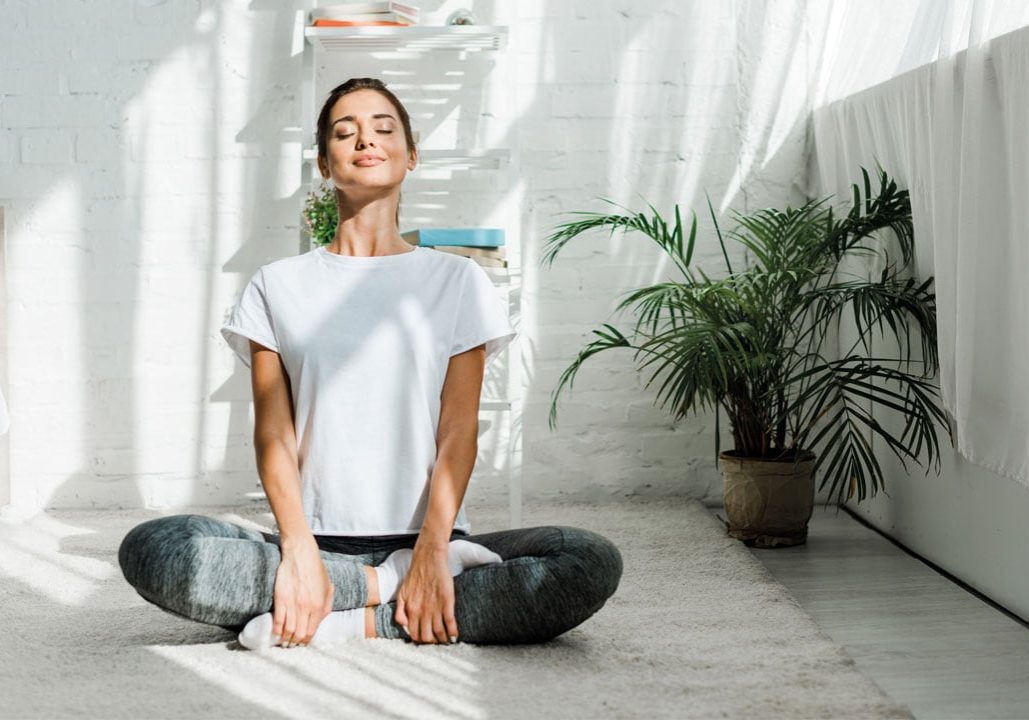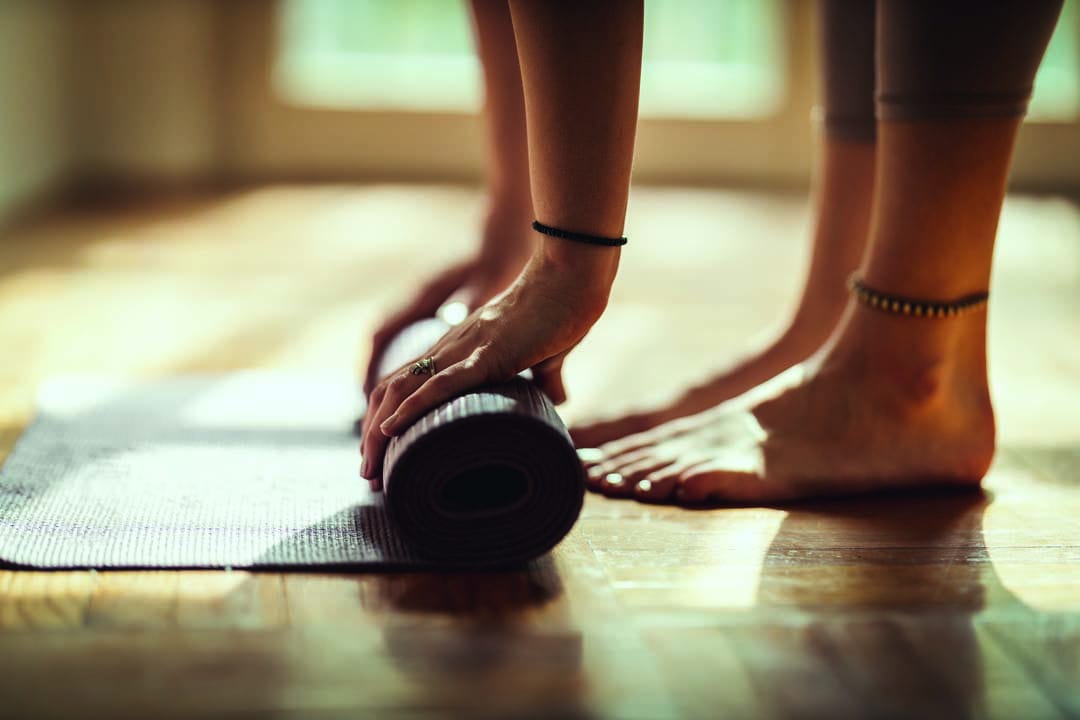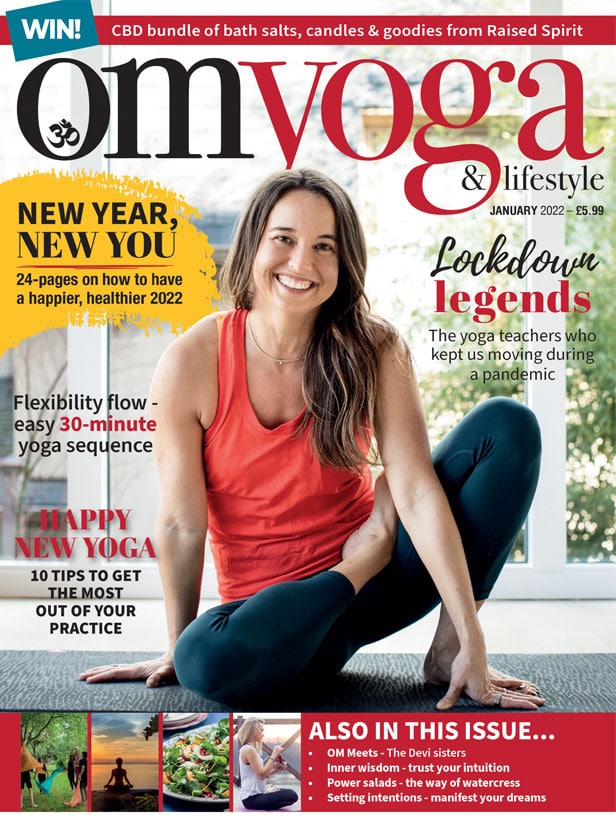
Building a sustainable yoga practice
Building a new year home meditation and yoga practice. By Judi Needham-Crane
Yoga unites the body, mind and breath through the practice of Ashtanga as described in the Yoga Sutras, recorded around 200 years BCE. The first seed of knowledge in the Sutras is:
“With humility (an open heart and mind) we embrace the sacred study of yoga.”
Yoga is a study, a discipline, that is benefited most of all through a regular practice. Attending a weekly class, online or in person, with a knowledgeable and experienced teacher is vitally important to our practice, as is a daily practice of our own.
Vinyasa flow is a fantastic practice, however unless you have a lot of spare time it isn’t practical on a daily basis. The simpler the home practice, the more likely we are to adopt it into our routine, such as starting with a five-minute breath meditation, adding in gentle asana (postures). In the Sutras, asana (poses) come before meditation. However, the practice below is an accessible way to begin.
Concentration on the exhale
Exhaling through the nose, the inhale occurring naturally. Imagine the exhale as a gentle wave lapping a sandy shore; the inhale, the natural draw back of the water leading to the next exhalation. Continue for 5-10 breaths. Notice any effects on body, mind, breath and energy. Take the awareness to the heart centre and notice the effects here.
This is an accessible practice even in the most hectic of households; a powerful beginning. Practise before sleep in the quiet of your bed covers, or first thing in the morning.
“Slow, easeful exhalations can be used to restore and preserve balance”.
Once a meditation practice is established, five minutes a day, perhaps longer, then we approach a physical practice…on and off the mat.
Practice Tadasana (mountain pose) whenever the opportunity arises. Tadasana is strong, tall, engaged, steady, comfortable. Either seated or standing, each foot in contact with the floor, raise the toes and lower, lift up through the arches of the feet and bring the weight to the heels. Engage the calf muscles and thighs, the knees soft. Lift slightly into the centre of the pelvic floor, gently draw the navel back. Lift the chest, roll the shoulders back and down. Lengthen the arms down by the sides to the tips of the fingers, lengthen the spine and the neck as if being drawn up by a cord through the crown of the head. Soften the face and eyes, the gaze straight ahead and slightly unfocused. Feel into the ground beneath the feet, breathe.
Other practices include Sukhasana (easy cross legged pose) rather than lounging on a sofa, or enjoy a few rounds of Marjariasana (cat/cow) with the breath.

Progressing to the mat
Talk to your yoga teacher and tell them you are interested in starting your own home practice; I am sure they will be supportive. Jot down the warm-up poses from your class; don’t forget the cautions and alternatives that are appropriate for you. Draw stick figures next to the pose name and cues. Include a forward fold, back bend, twist and side bend for spine mobility; perhaps five or six poses. Find a space where a mat can be stored ready to roll out (easier said than done; I encourage you to be creative). Consider a pay-off with family members such as I will respect your time if you respect mine. Perhaps the family could engage in an activity that doesn’t interest you, freeing a bedroom for your use.
Now that you have the poses, you are ready to start your practice. Dim the lights, switch off the phone, clear the space of obstacles, set a timer for 20 minutes. Start with a five-minute meditation as above, 10 minutes of the poses noted in class and a final 3-5-minute relaxation (don’t forget your blanket). About 18-20 minutes in total. How do you feel? Your body and mind will be grateful for this gentle, easeful practice.
Once practice is established, consider extending with longer periods of quiet with the breath; incorporate alternative meditations; introduce a stronger but familiar asana after the warm-up, include a warm down, then enjoy a longer Savasana. Five minutes to spare? Do a simple stretch and a breath practice; when there is more opportunity, a longer practice. Perhaps subscribe to an online yoga provider. Many have a library of practices of varying lengths to choose from.
Continue attending a weekly class, live online or in-person. An experienced teacher will ensure your alignment is on track and suggest more practices suitable for home to keep things fresh. Just like driving, we can develop bad habits if left to our own devices; attending a live class keeps us safe and encourages development.
Gradually your practice will become a home to you; home on your mat, in your heart, in your breath. You will benefit from increased wellbeing, energy, strength and flexibility. A greater sense of embodied awareness and ability to cope with the stressors of daily life. Your concentration will improve and your immune system will become more balanced.
Most of all, practise regularly and enjoy your yoga. What a great way to start 2022.
Find out more about Judi Needham-Crane’s classes (online and in-person) at: judidoesyoga.com


